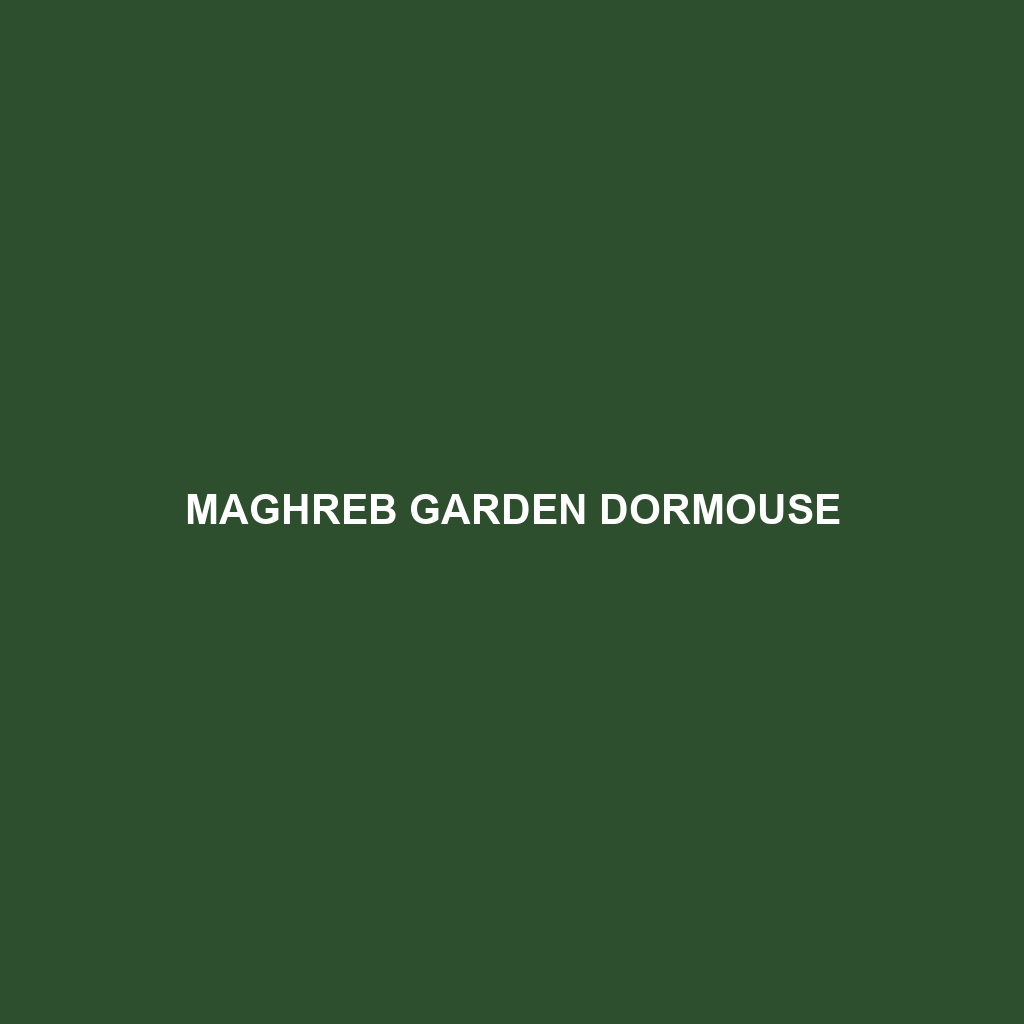European Garden Dormouse
Common Name: European Garden Dormouse
Scientific Name: Graphiurus murinus
Habitat
The European Garden Dormouse is primarily found in temperate regions of Europe, particularly in countries such as France, Germany, and the Czech Republic. This species thrives in deciduous forests, shrublands, and old gardens, where it enjoys a warm, humid environment. These dormice prefer areas with dense underbrush and an abundance of flowering plants, which provide both food and shelter.
Physical Characteristics
The European Garden Dormouse typically measures between 10 to 12 cm in length, with a bushy tail nearly the same length as its body. It is characterized by a soft, fluffy fur that is usually a mix of light brown and sandy tones, providing excellent camouflage within its natural habitat. Notable features include large, expressive eyes and pronounced whiskers, which aid in its nocturnal lifestyle.
Behavior
This species is known for its unique nocturnal behaviors, often being most active at night. The European Garden Dormouse demonstrates remarkable climbing abilities, utilizing trees and shrubs for foraging and nesting. They have a distinct hibernation period during winter, where they enter a deep sleep to survive the colder months, reducing their metabolic rate significantly.
Diet
The diet of the European Garden Dormouse is predominantly herbivorous, featuring a variety of nuts, fruits, seeds, and flowers. Some common food sources include hazelnuts, acorns, and juicy berries. During the summer, they may also indulge in insects and other invertebrates, which help supplement their protein intake. This varied diet is crucial for their energy needs, especially before hibernation.
Reproduction
The breeding season for the European Garden Dormouse typically occurs between May and July, with females giving birth to litters of around 3 to 6 young after a gestation period of approximately 4 weeks. Offspring are born blind and hairless, requiring considerable maternal care. As the young mature, they learn essential survival skills from their mothers, preparing them for a life of independence.
Conservation Status
Currently, the European Garden Dormouse is classified as Vulnerable according to the IUCN Red List. Habitat loss due to urbanization and agricultural expansion poses significant threats to its populations. Conservation efforts are underway to protect their natural habitats and ensure their survival.
Interesting Facts
One fascinating aspect of the European Garden Dormouse is its ability to enter a torpid state, similar to hibernation, during extreme weather conditions. Additionally, these creatures are known for their playful nature, often seen engaging in social behaviors and grooming one another in their colonies.
Role in Ecosystem
The European Garden Dormouse plays a vital role in its ecosystem as both a seed disperser and a prey species. By feeding on various fruits and seeds, they contribute to the growth of new plants throughout their environment. Additionally, they serve as a food source for various predators, thus maintaining the balance in their ecological community.
